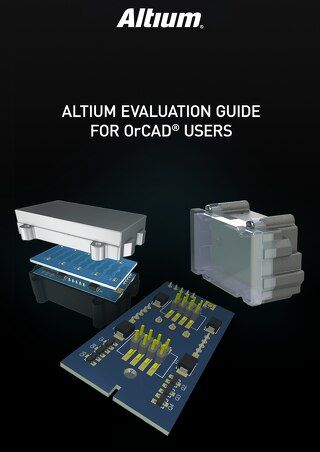Altium Designer Evaluation Guide for OrCAD® Users
Created: February 9, 2018
Updated: March 20, 2020
Updated: March 20, 2020

Related Resources
Related Technical Documentation
Take advantage of the world's
most trusted PCB design system.
One interface. One data
model. Endless possibilities.
Effortlessly collaborate with
mechanical designers.
The world's most trusted
PCB design platform
Best in class interactive
routing
View License Options
Try Altium Designer
Which best describes you?
Step 1 of 2
Try Altium Designer
Which best describes you?
 Back
Back
Step 1 of 2
 Back
Back
Step 1 of 2
Thank you, you are now subscribed to updates.

Easy, Powerful, Modern
The world’s most trusted PCB design system.

Compare Altium Designer vs. OrCAD
Altium Designer provides the most advanced PCB tools.

Easy, Powerful, Modern
The world’s most trusted PCB design system.

Migrate from OrCAD to Altium Designer
Experience the Altium Designer difference.
 Open as PDF
Open as PDF










